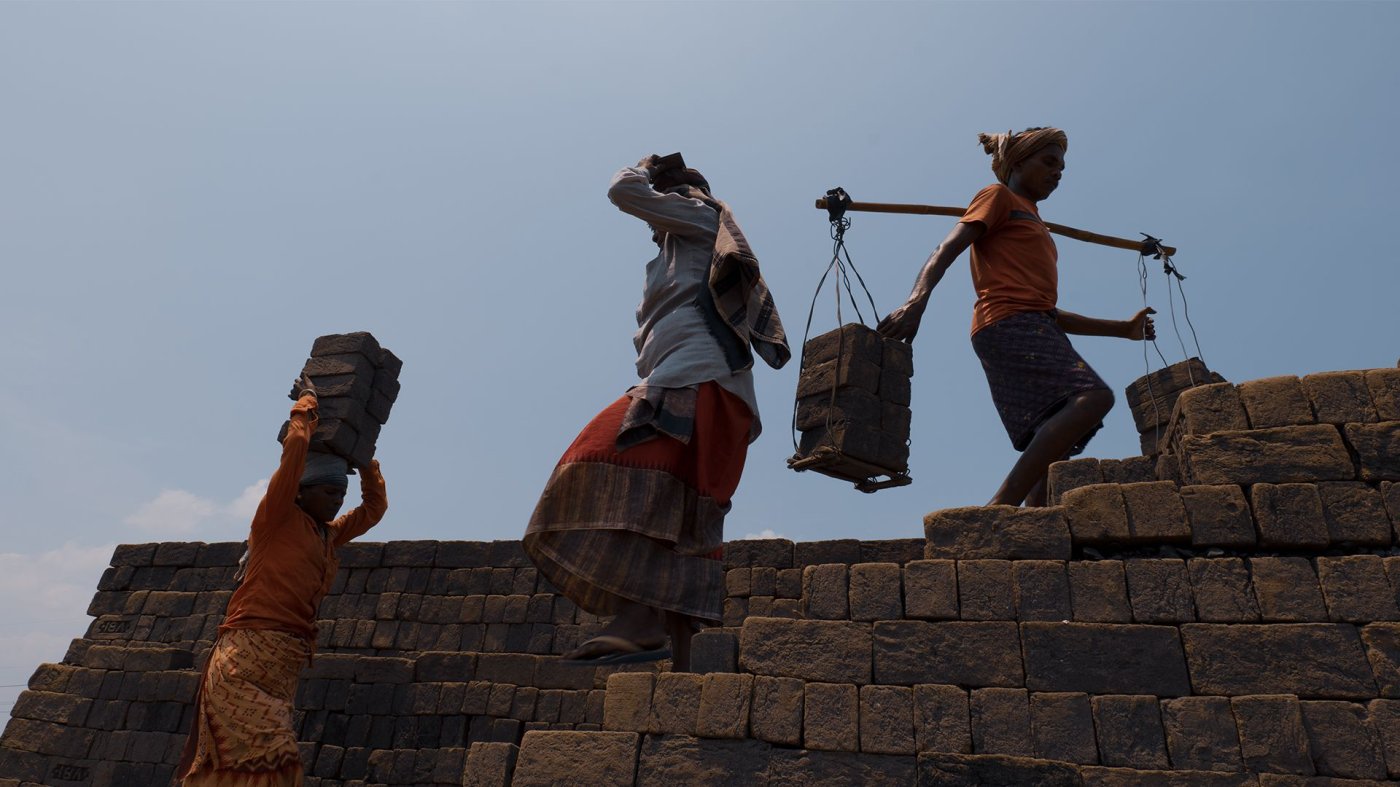Hyderabad: “We can talk freely, there won’t be any problem.” The brick kiln owner was away, Gaurav Bhoi assured Article 14 over the phone.
It was 15 December 2022, a day after the Bhoi siblings Gaurav, his elder brother Chitrasen, and his younger brother and sister Aurav and Bhagyawati, respectively, had reached the site where they would be employed for the next six months. The munshi (manager) was the sole figure of authority at the kiln for now, “and he is an Odia fellow”, a kindred soul, according to 22-year-old Gaurav Bhoi.
D Venkateswarlu’s brick kiln, VBI Bricks, was located about 15 kilometres east of Hyderabad airport, in Raviryal village of Maheshwaram block in Telangana’s Rangareddy district. Ten other brick kilns were in operation in Raviryal and Adibatla, along roads branching out from the Nehru Outer Ring Road and National Highway 765.
These roads were lined with spacious plots of fenced off land, but as they approached the interiors, they passed through verdant fields of paddy, the landscape punctuated by clusters of brick kilns.
Gaurav Bhoi’s assurance was crucial, for kiln owners, munshis and minders normally maintained a close watch over workers day and night. No strangers could enter worksites or talk to workers.
Venkateswarlu had a reputation for being highly surveillant.
The Bhoi siblings’ friend and fellow villager from Ainlabhata in western Odisha’s Bolangir district, Nira Kar, had worked at VBI Bricks earlier. He told Article 14, “He would sit there in front of the office all day. Even at night, he would not go home to his family in Hyderabad. He would just stay there and keep an eye on who was doing what, talking to who, and going where. In the market on off days, if we spoke to a local, his men would shoo us away.”
The surveillance was indicative of bonded or forced labour, as defined under the Bonded Labour System (Abolition) Act (BLSAA), 1976, and it served a key purpose—to conceal a range of violations in the operations of brick kilns.
In the course of a nine-month investigation into the causes and outcome of persisting modern slavery, Article 14 visited 15 brick kilns in Telangana’s Rangareddy, Warangal, Peddapalli and Karimnagar districts, and in Andhra Pradesh’s Anakapalli and Visakhapatnam districts. At almost every kiln, workers’ living conditions blatantly violated their right to housing, water, sanitation and a clean and safe environment, which emanate from the right to life under Article 21 of the Indian Constitution.
Workers’ health was severely compromised due to pollution; women were exposed to risks including that of sexual violence; while children’s rights, including the right to education, were completely denied.
Across the kilns, government oversight contributed to the normalisation of denial of rights and basic services. Officials of the labour department or district administration and the police, who had the authority to enter or raid worksites and initiate proceedings for violations, rarely visited kilns without prior intimation to owners. Many were also unaware of relevant legal provisions.
In Telangana, despite numerous instances of workers being rescued (see here, here and here) especially from kilns in the Peddapalli and Karimnagar districts, no brick kiln has been raided by major government departments—raid locations in the state are decided by a computerised algorithm, and no brick kiln has featured until now.
The third of a four-part series on the persistence of modern slavery in India, this report investigates the conditions of work that trafficked labourers endure. Part 1 explored the magnitude of distress in rural western Odisha that prompted growing numbers of poor to seek out work as bonded labourers despite a 47-year-old law abolishing the practice; while Part 2 probed the organised networks of traffickers and kiln owners. The final part will consider the long-term impact of modern slavery on the lives of survivors.
Women: Precarious Lives, Invisible Work
Bhajanti Mahanand, 37, a resident of Dhamnimal village in Khaprakhol block of Bolangir, has been a migrant worker for 25 years, first travelling with her husband and then with their children, four sons and a daughter.
While at work in the kilns, her husband Jagan Mahanand, 40, does not drink except on market day. “The owners are very strict,” she said. “But here, he starts drinking in the morning with some friend or the other.” By dusk, he was usually at a theka (liquor vend) or on the roadside, inebriated, while Bhajanti made sure somebody brought him home safe.
For well over two decades, her entire family has migrated every year. With only an acre of farmland, the kilns are their primary source of sustenance. “But the work is taking a toll on the children.” Mukesh, 19, fell sick at a kiln in Telangana. He complained of weakness for days before his eyes turned yellow and he could no longer sit up. “The seth refused to give him leave or assign him less strenuous work,” the weary mother said.
“Rupesh, 15, also fell sick after we returned and doctors said he has some blood circulation problem.” The family could not afford medicines for either boy.
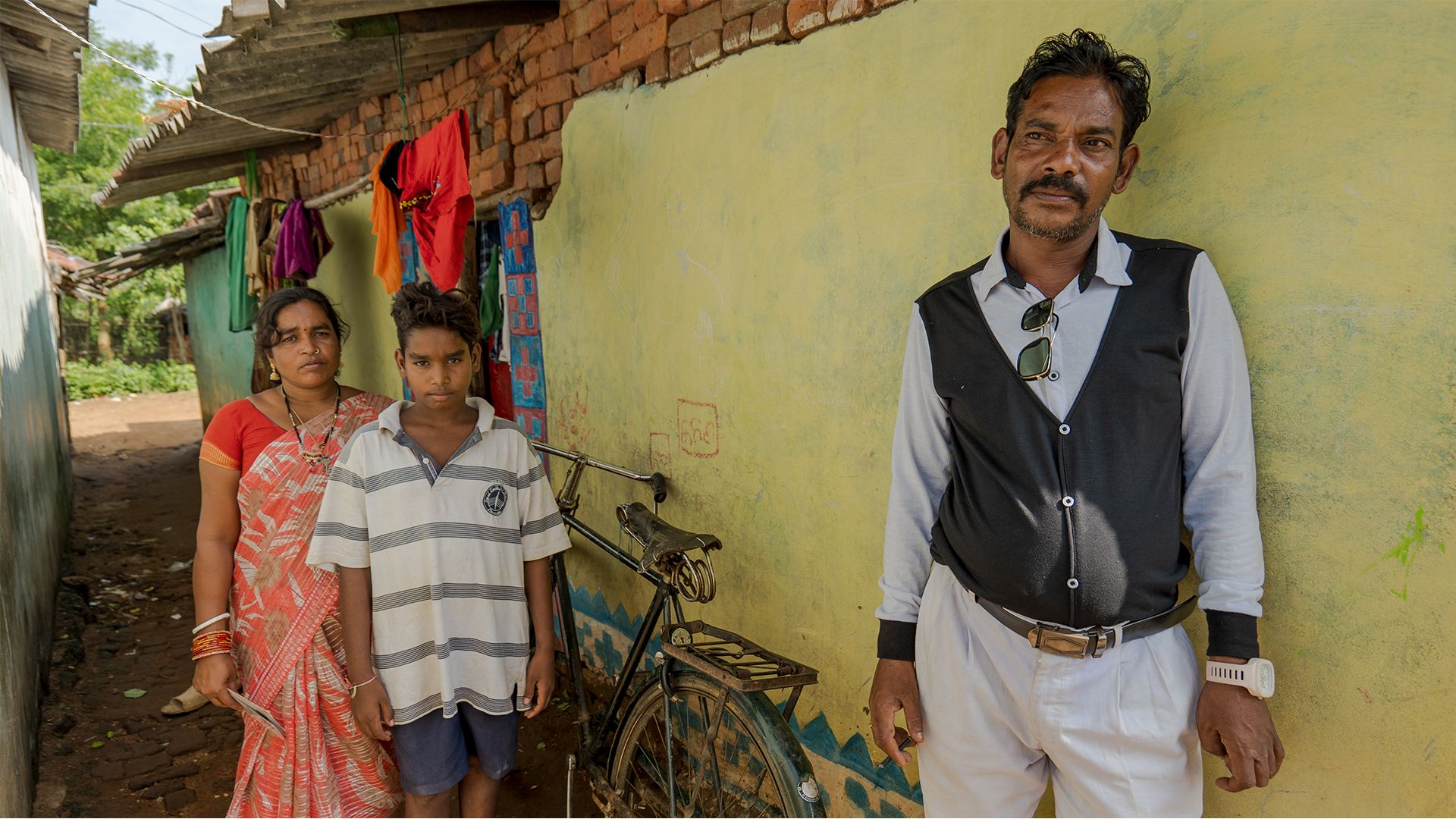
JM, also of Dhamnimal village, worked in the kilns for seven to eight years before she fell severely ill and decided to stop accompanying her brothers and their wives. Unmarried at 28, she lived with her parents and siblings. She learnt how to sew clothes and began to make blouses and salwars for neighbours, charging Rs 100-Rs 200 for each garment. “I also try out new designs thanks to Gulapi (her adolescent niece), who shows me videos on YouTube," she said.
In her late twenties, Bhanumati Mahanand, wife of Ranka Mahanand, was one more woman resident of Dhamnimal who no longer went to the kilns. Having studied till class 10, an unusual feat for girls in the region, she worked as a loader in brick kilns for five years after her marriage.
"Life there is very hard,” she said. “I had to carry bricks on my head the entire day, and cook meals in between on a wood fire, chop the firewood, clean the ghursi (hovel), bathe and feed the kids, and send them to school if there is one.” The daily grind was oppressive, she said. It affected her health and she decided to stop accompanying the others.
Bhagyawati Bhoi, 17, who dropped out of school after Class 5, toiled alongside her three brothers to mould and dry bricks, and also handled the cooking and cleaning. She fetched water, and cared for their small hovel.
A shy girl who smiled when faced with questions, she said she did not like working in the kilns. “I like being at home. It’s relaxed there (udhar aaram hai),” she told Article 14, adding that the owner had asked them to be wary of the visiting reporters.
“The seth told my brother, ‘They are not good people, Chhotu.’ He said don’t talk to them,” she said, breaking out into a giggle.
Gaurav and Chitrasen Bhoi underplayed Bhagyawati’s labour, saying she was there only to help them. This was typical of men who worked in the kilns, who also claimed that female workers were molested and sexually abused by owners and munshis.
Sushant Panigrahy, an activist from Maharapadar village in Odisha’s Bolangir district who worked with the NGO Samata in Visakhapatnam, said victims and their families in cases of sexual violence are too overcome by shame amd stigma to report matters to authorities.
“Many women have told me in private that owners sexually abused and raped them for months. Some even became pregnant and had to undergo abortions,” said Panigrahy, who was the first point of contact for many Odia kiln workers in Andhra and Telangana.
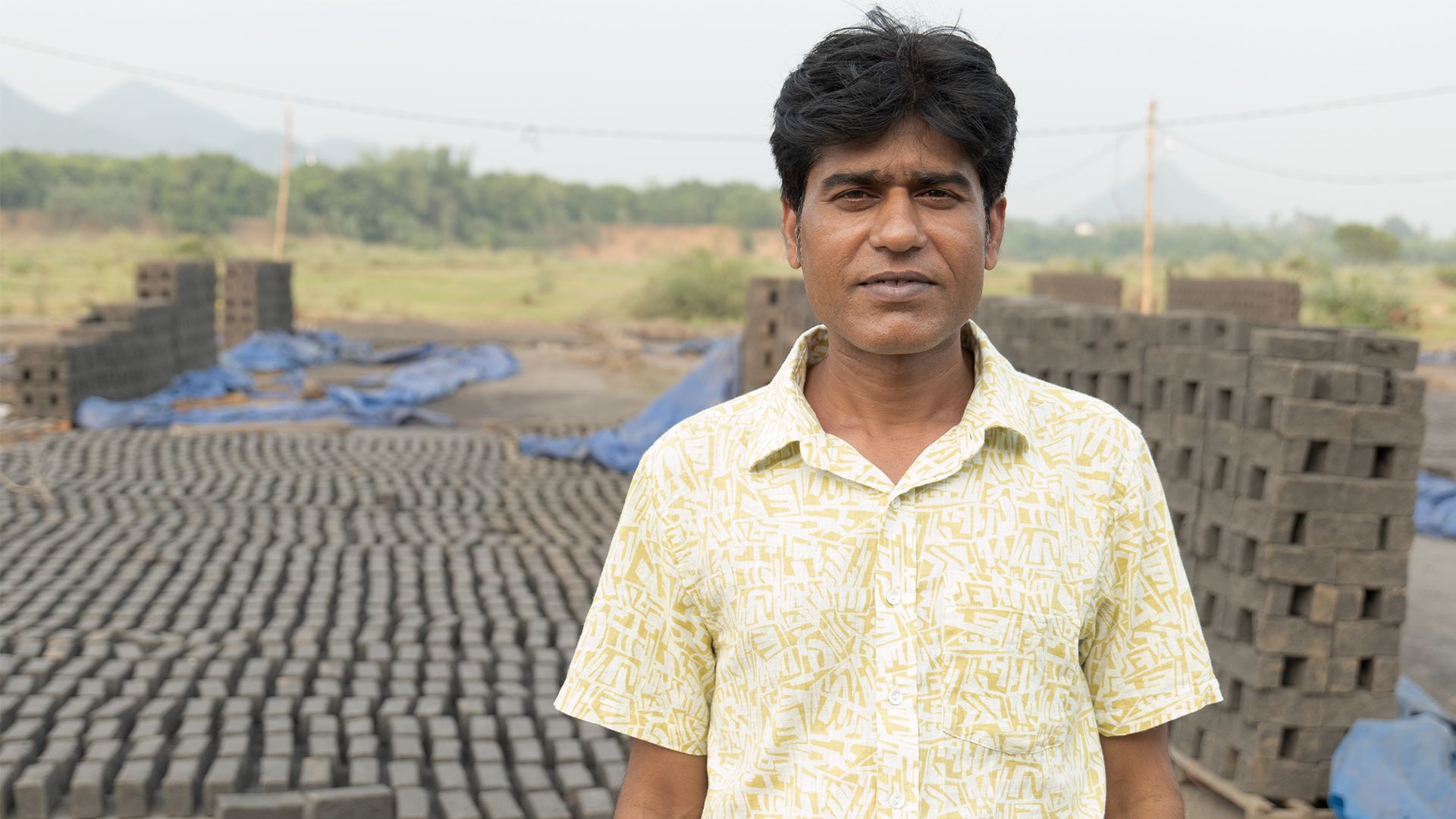
He intimated relevant government authorities about these incidents over email, WhatsApp, and Twitter, and was closely involved in the rescue of over 1,000 workers since 2018.
Varsha Bhargavi, a Hyderabad-based activist, gender sensitisation trainer and reporter who interacted with women workers at length during the Covid-19 pandemic, said women opened up about such violence only in the absence of their husbands or other male members of the family. “They said they were especially vulnerable while taking a bath or relieving themselves in the open, under the cover of darkness.”
At The Kilns, Housing Is A Brick-And-Mud Hovel
On 15 December 2022, when Article 14 met Gaurav and Chitrasen Bhoi, 27, on the unpaved road adjacent to VBI Bricks, they were beaming.
“We finished making our ghursi (hovel) in just one day,” said Chitrasen Bhoi, after exchanging pleasantries. “Come, come, have a look.”
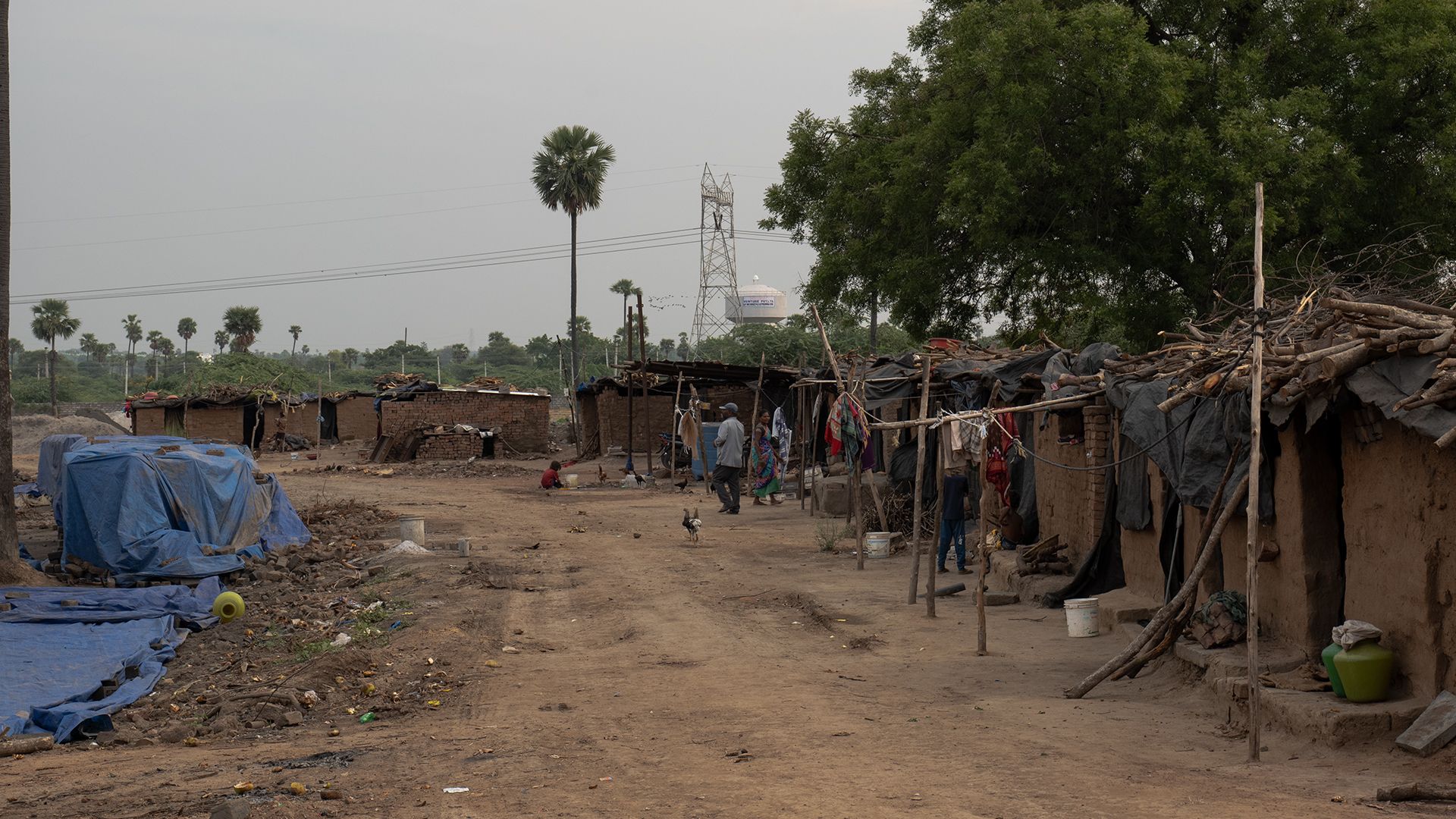
Constructing their own hovels was among several tasks that migrant workers undertook upon reaching the brick kilns—housing was not accounted for or paid for by owners. Other tasks included preparing pits for mixing raw materials, flattening and clearing the ground to lay out bricks to dry, and carrying and chopping wood for firing the kilns.
The kiln site, over six acres large, had no boundary wall or fence, and was shrouded in darkness. Sitaram Bagh, the munshi, said only 20 workers had arrived and more were expected in coming days.
Most of those present including the Bhois were brick moulders, grouped into pathris, or units of three-five workers, whereas some were dulaai or haulage workers. All were all from Odisha’s KBK region, and unlike the Bhois, most had taken lump sum advances, the munshi noted.
A locked room served as the owner’s office-cum-quarter. Women could be seen on either side of this office, in front of half-built hovels, busy cooking meals for the night. Children were running around, engaged in games and friendly banter.
The Bhois’ hovel was like any other, except that it was complete. It measured around 8 feet by 10 feet. Its walls were made of discarded/damaged bricks and freshly coated mud, still not dry. Its roof was fashioned out of logs of wood and tarpaulin, topped with palm fronds, and was so low-hanging that a person of average height would not be able to stand up straight inside. A two-foot gap in the front wall served as the entrance—there were no doors or windows—and the owner, munshi and other minders were free to enter at will.
Beyond the hovels, the site was flat and barren, interspersed with uncovered heaps of coal, mud, fly ash, rice husk and fine sand, all important raw materials in brick manufacturing. With every gust of wind, the fly ash, sand, coal dust and other particulate matter rose up in swirls and entered the homes, clothes, kitchens, mouths, eyes, nose, ears and even pores of the skin of those at the kiln.
Open tanks adjacent to the mixing pits and along the edges of the site catered to workers’ requirements for water, including for cooking and drinking, along with a borewell. The tanks contained turbid water, with floating leaves and branches, and occasionally, moss and algae. Once work started, some tanks would get heavily polluted as kodalis (shovels) and other implements were washed in them.
Only two Indian-style toilets stood at the far end of the kiln, though around 70-80 migrants and their children lived and worked here every year. Understandably, the toilets had fallen into disrepair, and all the workers including the girls and women bathed and relieved themselves in the open.
‘Blood Pressure, Diabetes After Entering This Business’
D Venkateswarlu, 56, the owner of VBI Bricks, was a stout man with a slight potbelly, balding hair and a salt and pepper stubble.
A native of Andhra Pradesh’s Nellore district, he had retired from the armed forces and received a monthly pension of Rs 23,000. His family included his homemaker wife, a daughter pursuing postgraduate studies in medicine, and a son in his final year of chartered accountancy. His residence was in a posh neighbourhood of Hyderabad, but he spent most of his time during the production season at VBI Bricks.
Like many other owners interviewed by Article 14, Venkateswarlu entered the business under the guidance of a relative, in his case a man who owned a brick kiln in neighbouring Tukkuguda village.
“I worked with my sister-in-law’s husband for a year before starting this factory in 2014. In the first year itself, we produced 20 lakh bricks with just six pathris,” he told Article 14, beaming.
On average, every pathri moulded 300,000-400,000 bricks per season, but many bricks were damaged in the process of firing as well as due to unseasonal rains. A production of 20 lakh bricks with six pathris was impressive, especially for a newcomer to the business.
Venkateswarlu claimed his kiln was registered under the Factories Act, 1948, but did not show any relevant documents. As his business grew, he acquired the reputation of being a strict taskmaster who thought nothing of assaulting errant workers.
“He is concerned about only one thing—work,” villagers in Ainlabhata who had worked at VBI Bricks told Article 14.
“If you slack at work because you are tired or unwell, or if you come drunk, he does not spare you,” said Nira Kar, showing Article 14 a video he shot in 2020 while working at VBI Bricks.
The video showed Venkat heckling, pushing and repeatedly slapping a frail, middle-aged Odia worker who was crying out in pain. A woman, possibly his wife, was wailing, while other workers looked on helplessly.
“The worker was from Nuapada (district). His pathri could not make 20,000 bricks that week, so the owner was hitting him,” explained one worker. “He did this whenever someone failed to meet the target.”
Article 14 asked Venkateswarlu about the incident, and he was evasive.
“I am always good with workers… It is not good to hit anyone,” he mumbled, before launching into a tirade about mounting losses, and declaring that he was ready to quit the trade.
He took loans at 1.5%-2% per month to fund his business, he said, for leasing land, buying raw materials and making advance payments to workers. He repaid these loans from the proceeds of brick sales, and managed to pocket “small profits”. But rains destroyed 10 lakh bricks during the last season, he lamented, and he had to sell two trucks to repay a part of the loans.
“I have taken loans of Rs 70 lakh from 11 places this year,” he told Article 14, claiming that the cost of raw materials had risen 40% to 50% in the last five years. “I have got blood pressure and sugar after entering this business.”
Other kiln owners in AP and Telangana echoed Venkateswarlu regarding mounting raw material prices and falling profit margins. However, while many said the industry was facing permanent closure, they continued operating the kilns and maintained their lavish lifestyles.
Workers faced higher levels of exploitation than earlier, they said, a fact corroborated by sardars.
Until the late 2000s, working hours at kilns were limited to eight-nine hours a day. “Now, 12-14 hours of work is normal in most places,” said GT, a prominent sardar from Belpada block in Bolangir who supplied labour to Telangana. “In districts like Peddapalli and Karimnagar where there are massive, mechanised brick kilns, workers are made to work for 15-16 hours.”
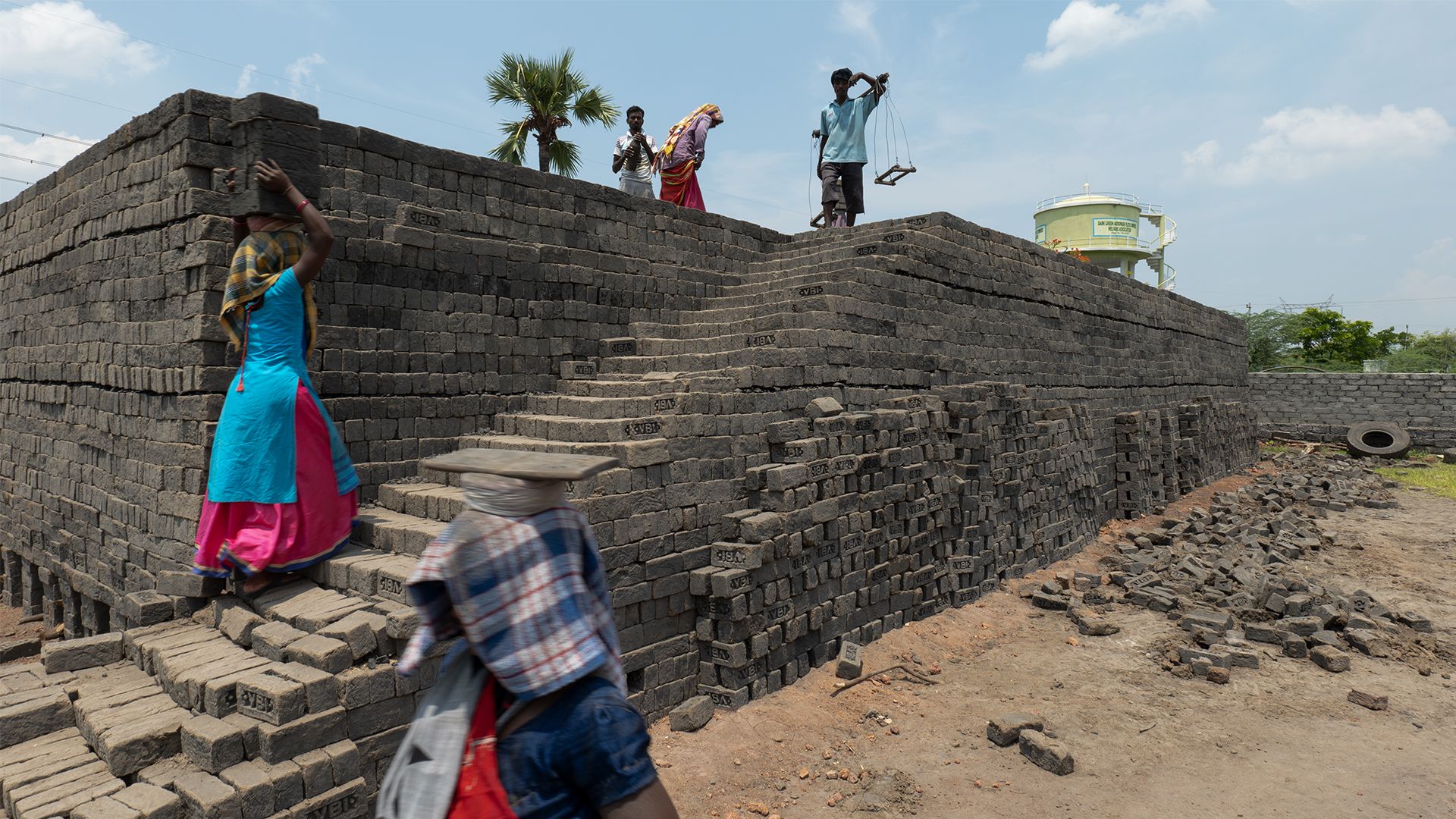
A Baton-Wielding Manager From Odisha
Munshis played a key role in enforcing the stipulated hours of work, split into morning and evening shifts. Their job included waking up workers in the wee hours and ensuring they reported for shifts on time. Munshis were not averse to hitting those who failed to comply.
At VBI Bricks, Sitaram Bagh (30), a native of Odisha, held this difficult job.
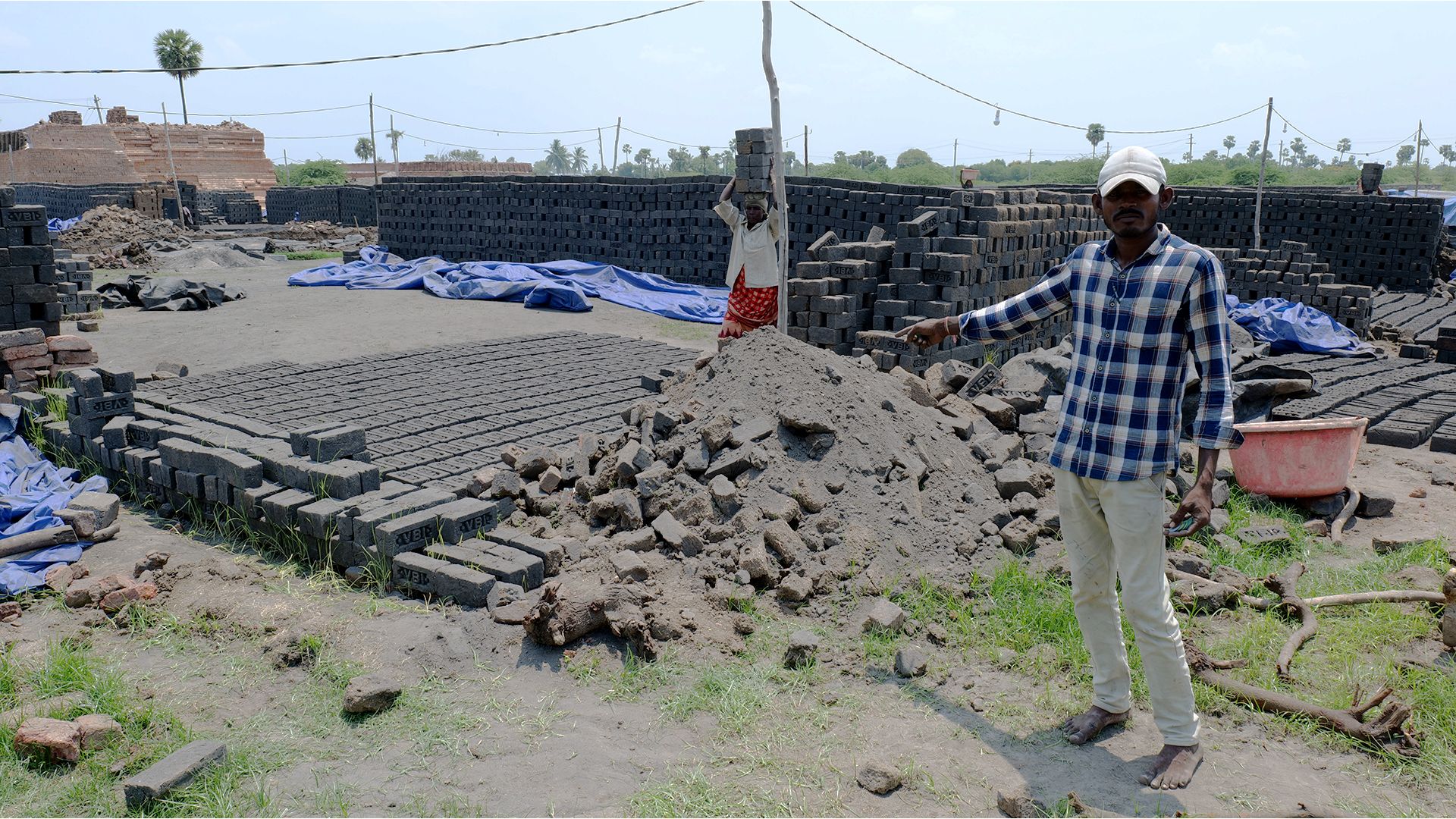
He and his wife had worked at brick kilns near Visakhapatnam for 10 years before they came to VBI Bricks in late 2021, to work as moulders.
“The owner had dismissed the previous munshi due to some dispute, so I asked him if I could do the job,” Bagh told Article 14. He had studied till class 10, and used to maintain weekly production records, the primary responsibility of a munshi, at an earlier site.
Venkateswarlu required something more.
“Before he recruited me, he asked me, Danda chalana aata hai kya? (can you wield the baton?)” Bagh said he had never so much as slapped anyone. “But I said yes.”
On occasion, when workers refused to obey orders or fell short of targets, he had no other resort but to hit them, Bagh conceded.
The Bhois, however, were spared the rod, and Bagh was friendly and lenient with them, largely because they were committed workhorses. Both he and Venkateswarlu referred to them as “our best workers” who always met targets.
Children’s Education, Lost In Translation
Nila Gidhli, 40, a resident of Gundrupali village in Bolangir, had worked in brick kilns since she was young, continuing to do so after marrying Chandra Gidhli and having three children.
“At the kilns, at least we adults get paid, but kids' labour is extracted for free,” she told Article 14.
“Owners enter our hovels and catch hold of them, and make them clean the working area or carry broken pieces of brick, or flip bricks drying in the sun,” Gidhli continued.
During Article 14’s first visit to VBI Bricks in December 2022, a middle-aged man in a white dhoti and vest walked up gingerly, unsure if he might be reprimanded for approaching strangers.
He was from Nuapada district, and was here with his son, daughter-in-law and three grandchildren (aged five, six and eight), explained Gaurav Bhoi.
The children had accompanied the family because there was nobody to care for them at home. “Here they miss out on school. Can you please do something?” the old man asked. Unlike the issue of women’s sexual abuse, workers were vocal about children’s education.
Most migrant families Article 14 spoke to had made it a point to enrol their children in government schools in their villages. Almost all hoped that the next generation would find another line of work.
When children accompanied adult migrants to the brick kilns, however, they tended to skip a semester, for the medium of instruction in Andhra Pradesh and Telangana was Telugu, an unfamiliar language.
Following civil society groups’ intervention, in 2017, the Telangana government partnered with Paris-based non-profit Aide et Action to launch ‘worksite schools’ in the brick kilns. Teachers were brought in from Odisha to teach the children, and seasonal hostels were launched to enable children to stay back and continue with their studies.
At present, worksite schools located at brick kilns in Telangana were providing education to about 6,500-7,000 children, said Archana Suresh, director of Telangana Social Impact Group, a consortium led by industries minister KT Rama Rao that helped businesses meet sustainable development goals.
These schools were limited to Rangareddy, Yadadri Bhuvanagiri and Medchal districts. Most were one-room structures located inside brick kilns, while sometimes, they were housed in a room inside local government schools.
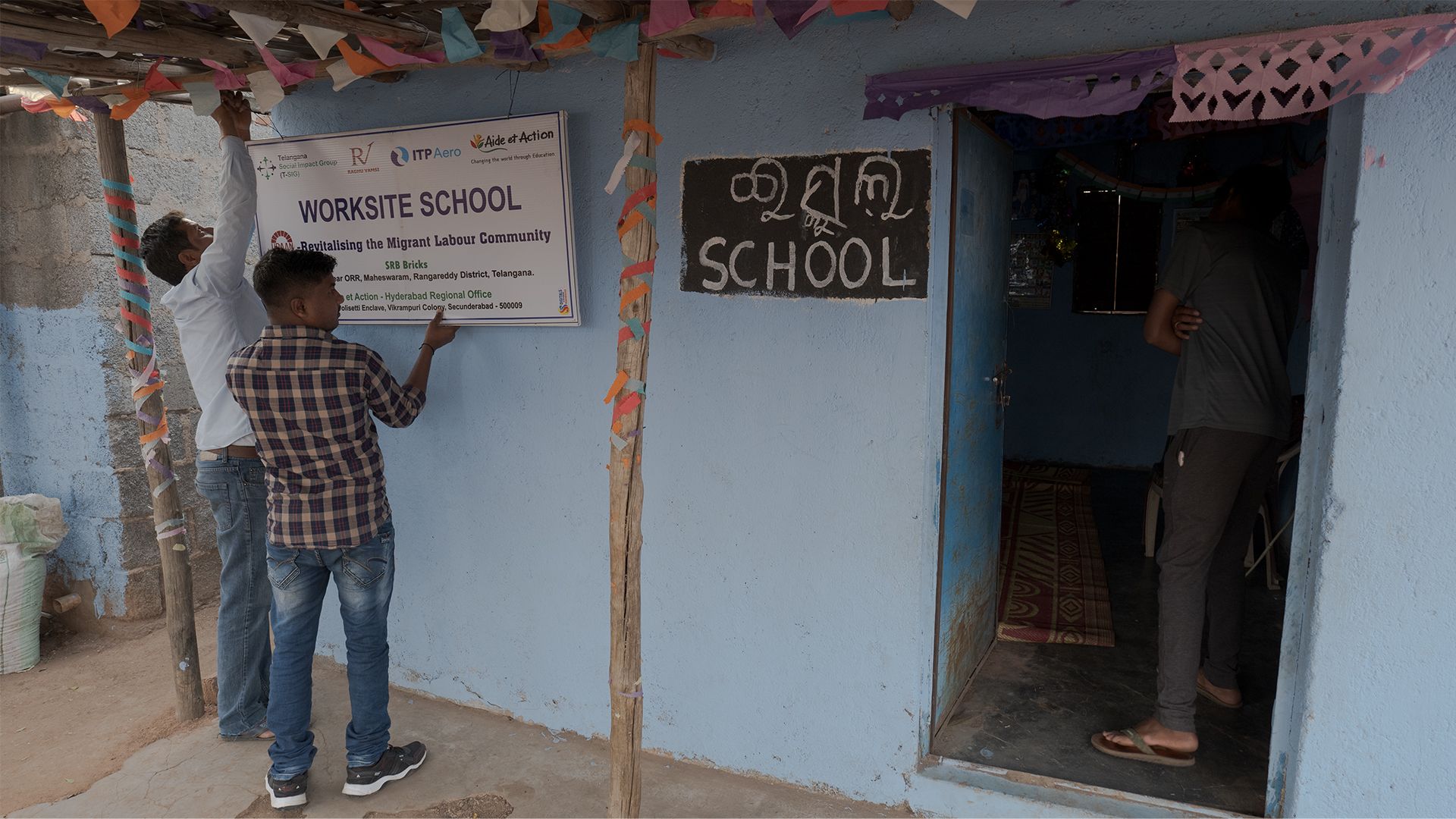
The children of workers engaged at VBI Bricks and 10 more neighbouring kilns were accommodated in a single room. Though this seemed to address the old man’s concerns, the quality of education children received was doubtful.
On 6 February 2023, when Article 14 visited the school, the allocated room was packed, with 85 of the 140 students on rolls.
“Space is a major problem here,” said Sanjay Rana, one of the two Odia teachers assigned to teach at the school. It was a market day (off day for kiln workers to buy their weekly supply of essentials) and some children were away. When more children show up, they are seated in the corridor, he added.
“They raise a ruckus on the slightest pretext and most of the time goes by in just managing them,” he said defensively, as students erupted in glee at the sound of the bell. They fetched plates and glasses from their bags and rushed to assemble in a queue, ready for the mid-day meal.
Violation Of Workers’ Rights, Laws
The BLSAA defined the bonded labour system as a system of forced labour under which a debtor placed himself in the service of a creditor for a specified period, whether in consideration of an advance, or due to obligation, inheritance or some other reason. It also specified other markers of the bonded labour system—forfeiture of debtors’ freedom of employment, freedom of movement, and the freedom to sell property/product of labour at market value.
Passed in 1976, the BLSAA abolished all forms of bonded labour in the country, and mandated strict punishment for offenders. At VBI Bricks and all other brick kilns Article 14 visited, this and various laws were flouted with impunity.
The Factories Act, 1948, under which brick kilns were registered, required establishments to provide a creche, rest room, drinking water and other facilities for workers. No such amenities were not present at VBI Bricks or any other registered or unregistered kiln.
The precarious conditions of living in the brick kilns violated workers’ right to life enshrined under Article 21 of the Constitution. ‘Life’ in Article 21 did not connote mere physical existence, but encompassed the right to live with dignity, right to housing, water and sanitation and a clean and healthy environment, and right against sexual harassment at workplace. The Supreme Court stressed on this in numerous landmark judgements.
Member of Parliament (Rajya Sabha) from Bolangir, Niranjan Bishi, said the inter-state labour migration to brick kilns of Andhra Pradesh, Tamil Nadu, Telangana and other states, as well as the large-scale migration of youngsters to Gujarat, Rajasthan, Karnataka and Uttar Pradesh for jobs in textile factories and other industries is on account of the lack of steady employment for unskilled workers except during the sowing and harvesting periods.
"Only maati kaam (mud excavation work) is available under the MGNREGS, and it takes five-six months for the Centre to disburse funds towards wages of workers, which leads to labour migration,” said Bishi.
Fly Ash, Sand, Coal Dust: Health Risks Proliferate
Brick kiln workers suffered from high morbidity and respiratory, gastrointestinal, psychosocial, dermatological and other disorders caused by hazards in the working environment, the high ambient temperature, the repetitive lifting of manual loads, and handling for sustained periods of time various hazardous raw materials without any personal protective devices, researchers found in 2020.
Fly ash, which workers mixed with mud to prepare the clay for moulding bricks, contained acidic, toxic and radioactive matter with known carcinogens. When inhaled or ingested, fly ash may impact the nervous system, cause cognitive defects, developmental delays and behavioural problems, besides increasing the chances of developing lung disease, kidney disease and gastrointestinal illness.
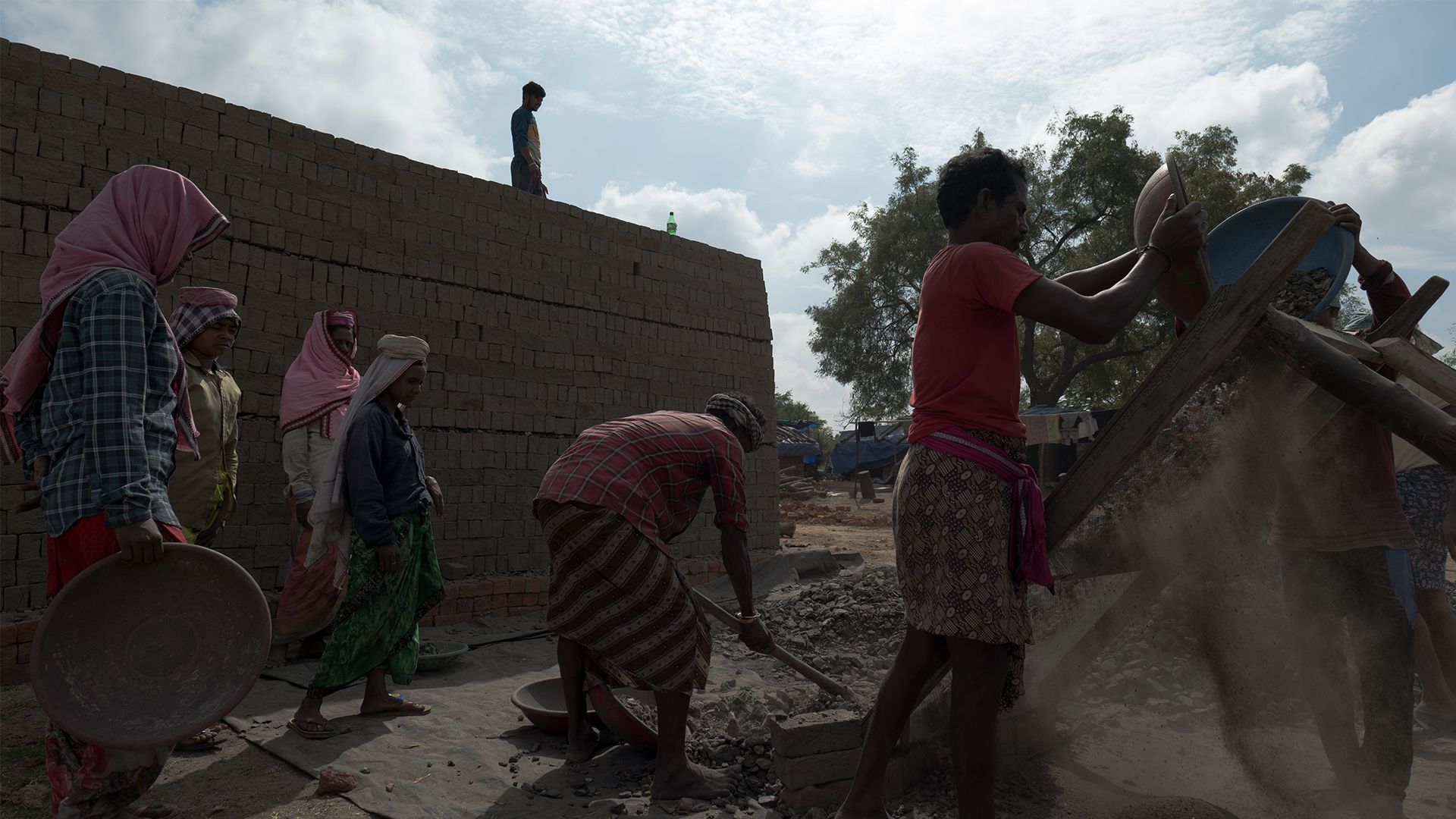
The fine sand that the kilns used in brick-making also contained silica, known to cause multiple diseases including silicosis, lung cancer, chronic obstructive pulmonary disease and kidney disease. Exposure to respirable crystalline silica could also lead to autoimmune disorders and cardiovascular impairment.
Similarly, inhalation of dust from coal used to fire the kilns may cause pneumoconiosis, a potentially disabling lung disease.
In 2016, when the Central Pollution Control Board (CPCB) categorised industries based on their pollution load, brick kilns were placed in the orange category, the second most polluting category, segregated according to emissions, effluents, waste material, pollutants released, etc. The following year, the CPCB ordered the closure of all kilns that did not have the sanction of state pollution control boards.
These steps had little impact in Andhra Pradesh and Telangana, where kilns simply fell back on a set of guidelines issued by the government of undivided Andhra Pradesh in 2010, exempting owners from seeking clearance from the state pollution control board and allowing them to establish new kilns if they had a no-objection certificate from the local body.
Ease of Doing Business Accords Impunity
Prolonged government oversight and corruption lay behind the plight of brick kiln workers, several government officers, non-profit representatives, journalists and activists in Telangana told Article 14.
As in western Odisha, government officials’ low levels of awareness or understanding about the BLSAA and other Constitutional and legal provisions was a major hurdle in enforcing the law in the destination states too. During the nine-month investigation, Article 14 met several officers in the labour department, district administration and police in Odisha and Telangana who did not know that the payment of lump sum advances constituted bonded labour under the BLSAA. Most conflated trafficking with sex work, and were unaware that the handling, harbouring and transport of persons for purposes for forced labour also constituted offences under anti-trafficking law.
Mahesh Bhagwat, additional director general of police, Criminal Investigation Department (CID), Telangana, was a rare exception.
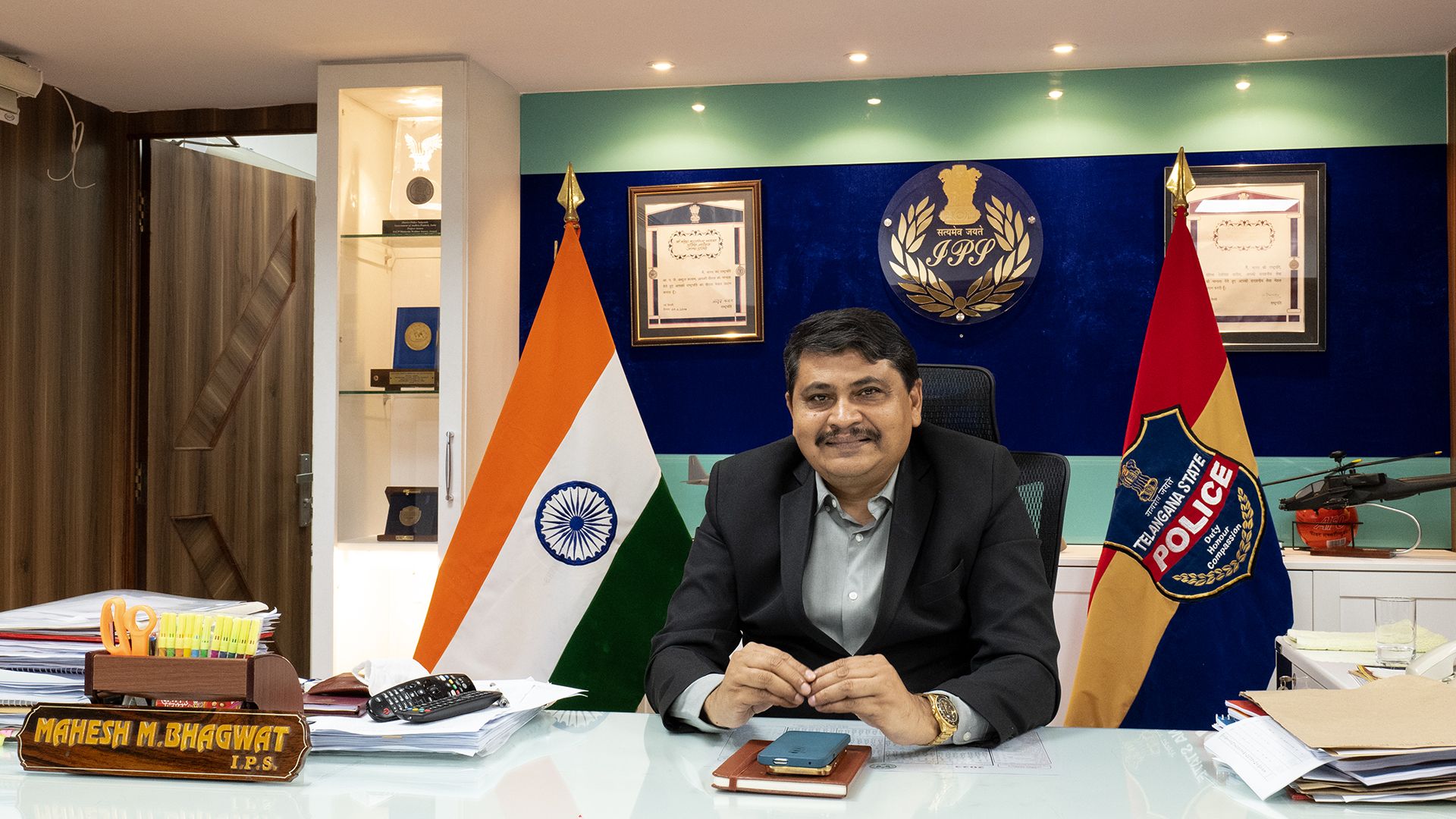
During his 2017-2022 tenure as commissioner of police, Rachakonda, one of three commissionerates in the Hyderabad area, he raided numerous brick kilns in the area under his jurisdiction and rescued more than 900 bonded labourers.
“The police do not have much of a role in the implementation of the BLSAA,” Bhagwat told Article 14. “We can’t even invoke sections of the BLSAA in FIRs without the sanction of the revenue department.”
The labour department, which plays a major role in ensuring the safety and welfare of migrant workers, is severely understaffed, added Bhagwat, who received an award from the US Department of State in 2017 for his fight against human trafficking.
Several others corroborated Bhagwat’s views on staff shortages in the labour department.
“In 2019, Telangana had over 19,000 factories registered under the Factories Act, but there were only 22 labour inspectors to check if they were complying with the law in 33 districts. That was less than one inspector per district,” said Varsha Bhargavi, who was state coordinator with the State Resource Centre for Elimination of Child Labour from 2017 to 2019, and collaborated closely with the labour department to conduct raids.
The other big hurdle in enforcing the ban on bonded labour was corruption.
“Local legislators and mafias, who have a major stake in the operation of brick kilns, bribe officials from the pollution control board, the labour department and the district collectorate,” said an assistant labour officer who requested anonymity.
In 2017, the Telangana government introduced a new scheme to inspect establishments for violation of labour laws. This worsened the plight of brick kiln workers, said activists.
While authorities were earlier free to conduct inspections to check on the implementation of specific laws such as the Factories Act, an order issued by Telangana’s labour department in April 2017 mandated a single joint inspection for 13 different laws. It categorised industries into low, medium or high risk groups, depending on the number of workers, and introduced a computerised system of inspections based on risk assessment.
“We used to conduct at least three to four inspections every month, and a majority of these were on brick kilns,” an assistant commissioner of labour in Telangana told Article 14 on condition of anonymity. “But after the introduction of ease of doing business norms, the computerised algorithm has not thrown up a single kiln for inspection.”
‘We Can Work Harder, Longer’
At VBI Bricks, neither the workers nor the owner or munshi were concerned about laws, legal provisions or their dilution.
Venkateswarlu’s focus remained sharply on targets, and he said he hoped to produce at least 40 lakh bricks during the 2023 season, and was depending on workers to make this possible.
The latter had their own motivations to meet those targets too. If they fell short, they would have to stay on in the service of the owner, beyond the brick-making season.
The Bhois, however, had no such fears. For one, they had not taken any advance, and secondly, they were confident of moulding bricks in excess of the stipulations.
“All of us in the pathri are young, and that is a major advantage,” Gaurav Bhoi told Article 14. “We can work longer hours and much harder than the oldies. We hope to earn enough this season to get Chitrasen married.”
(Aritra Bhattacharya is an independent journalist and researcher based in Kolkata. Saurabh Kumar is a researcher, multimedia journalist and documentary film-maker based in Mumbai.)
This is the third of a four-part series. Here is part 1, part 2 and part 4.
Next: Quacks For Mishaps, Reprisals For Runaways: Brick Kiln Workers Face Lifelong Collateral Damage To Health & Early Death
Get exclusive access to new databases, expert analyses, weekly newsletters, book excerpts and new ideas on democracy, law and society in India. Subscribe to Article 14.

